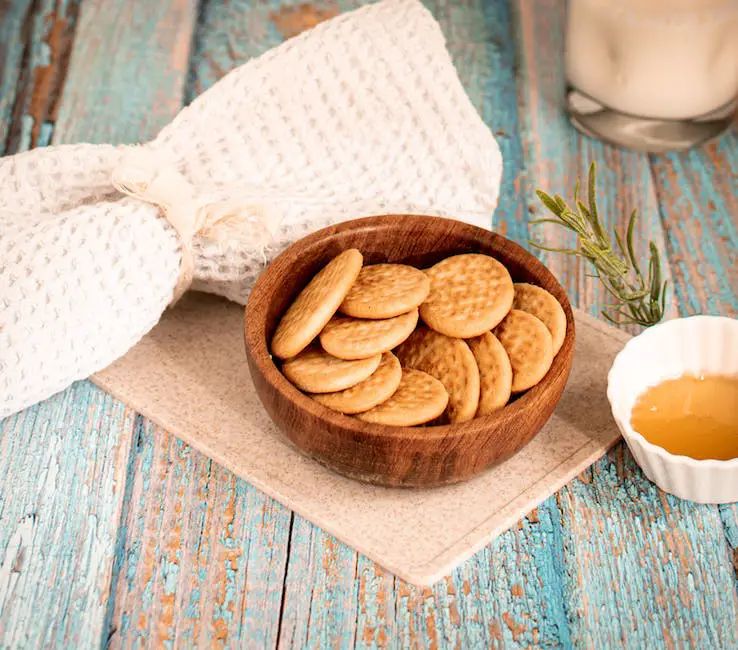Lawn bowls, steeped in tradition and brimming with strategic depth, is a captivating sport that has captured the hearts and minds of enthusiasts globally. Like any sport worth its salt, it has its nuances and peculiarities that make it both challenging and exciting. Given an intimate understanding of these aspects, coupled with consistent practice, one can become a proficient lawn bowler. This exploration will delve into the essential facets of this compelling game—learning the basics such as the materials required, understanding the aim, grasping the scoring system, and the significance of game formats.
It will then transition into a discussion on the eccentricity exclusively associated with lawn bowls—the bias, and how mastering its control during delivery can substantially improve one’s effectiveness in the game. Finally, it looks at the tactical strategies that one can employ based on the on-field scenario and a look at the etiquette that forms an integral part of the game’s spirit and charm.
Understanding the Basics of Lawn Bowling
Introduction: The Ancient Yet Entertaining Game of Lawn Bowling
Dating back to the 13th century, lawn bowling is a mixture of strategy, skill, and a touch of luck. The goal of this game is deceptively simple – get as many of your bowls as close as possible to the ‘jack’. But a dive into the subtleties of the sport reveals a competition with captivating depth.
Essential Material: Bowls, Jack, and Rinks
Before you can start a game of lawn bowls, you first need the right equipment:
- Lawn Bowls: The bowls are slightly weighted on one side, creating a bias that makes them curve as they roll. This bias applies a captivating twist to the game, making simple things like throwing a ball straight suddenly a challenge.
- Jack: The jack is a smaller white ball that acts as the target in lawn bowls. The aim is to get your bowl as close to the jack as possible.
- Rinks: The game is played on a rink that is ideally 14 feet wide and 100 feet long. The rink is divided into several rectangular playing areas also called rinks.
Objective: Closest To The Jack Wins
In lawn bowling, the aim is to have your bowls end up closer to the jack than your opponent. The first player rolls the jack to one end of the rink, and it then becomes the target for that end. After that, both players take turns to roll their bowls from the other end. The player whose bowl is closest to the jack scores points.
Scoring System: Every Close Bowl Counts
The scoring system in lawn bowling is straightforward. After all bowls have been played, the player or team with the bowl closest to the jack scores one point. They also score an additional point for each of their bowls that is closer to the jack than the opponent’s closest bowl. Thus, a player or team can score multiple points in a single end.
Game Format: Singles, Pairs, Triples and Fours
Lawn bowling can be played in various formats. In singles, one player competes against another, each with four bowls. Pairs include two team members who play with four bowls each. Triples consist of three team members playing with three bowls each. Finally, in fours, or “rink games,” each of the four team members play with two bowls each.
Conclusion: A Game of Skill, Strategy, and Fellowship
At first glance, lawn bowls may appear as a simple game, akin to horseshoes or bocce. But the rules hold subtle complexities that require a blend of hand-eye coordination, strategic planning, and teamwork. As you get to grips with these nuances, you will find a classy sport that blends athletic prowess with social camaraderie. Whether you wish to play casually at your local club or compete at the highest level, lawn bowls is a sport for all to enjoy.

Mastering The Delivery and the Bias
Introduction: The Art of the Lawn Bowl Delivery and Bias
Lawn bowls is an intricate game that combines finesse, precision, and strategy. At first glance, it seems relatively simple – players take turns rolling a ball towards a smaller ball, often referred to as the “jack.” But there’s a catch; these aren’t your regular, evenly weighted balls. Each lawn bowl has a unique characteristic known as a ‘bias.’ As it slows down, the bias makes the lawn bowl curve.
Delivery Basics: Coordinating Body and Mind
The delivery in lawn bowls is about precision. The key element of a good delivery is consistency. You want a smooth, balanced, and repeatable action.
- Stand with feet shoulder-width apart, parallel to the desired line of delivery.
- Grip the bowl properly. Your middle and ring fingers should support the weight of the bowl, while your index and little fingers keep the bowl stable.
- Bend your knees slightly, maintaining your body’s balance and aligning your shoulder with your target.
- Swing your arm back and then forward in a smooth movement, releasing the bowl when your arm is in the forward position.
Consistency is the key. Deliver the bowl with the same movement each time to make your shots more repeatable and accurate.
Deciphering the Bias
The bias of a lawn bowl is a weight imbalance built into the bowl that makes it curve as it slows down. The amount of curve a bowl will take is determined by its size and the amount of bias that has been built into it.
The side of the bowl that’s heavier will be marked with a smaller symbol or logo. When preparing to bowl, you need to decide whether to send the bowl on a right-hand or a left-hand bias.
- To play a right-hand bias, hold the bowl with the smaller logo in the left hand.
- To play a left-hand bias, hold the bowl with the smaller logo in the right hand.
Mastering the effect of bias requires a lot of practice. Experiment with different deliveries to understand how the bias affects the travel of the bowl on your chosen lawn and in different weather conditions.
Conclusion
Lawn bowls is a game of tactics, precision, and patience. Each delivery requires careful thought and planning, taking into account the bias of each bowl and the conditions of the lawn. Learning how to consistently deliver the bowl and use the bias to your advantage will greatly improve your game. With practice, you’ll find yourself predicting and controlling the path of your bowls like a pro. So, get out on the green and start practicing your delivery and understanding of the bias.

Grasping the Strategies and Etiquettes of the Game
Understanding the Intricacies of Lawn Bowling: A Primer
Lawn bowling or ‘bowls’ is a tactical game that requires precision, strategy, and an understanding of its basic etiquettes. Whether you are just starting or an enthusiast looking to hone your game, grasping these strategies and etiquettes is your first step to becoming a seasoned player. ‘Lawn Bowls’ is tailored to creating enjoyable yet competitive environments. Here is how you can get the most out of it.
The Game of Strategy: Translating Positions into Tactics
In bowling, the placement of the ‘jack’ (small ball) and bowls (larger balls) on the lawn fundamentally determines your approach. The player’s primary objective is to get their bowl closer to the jack than their opponent’s bowl. Not only does this positioning call for precision but also requires an understanding that every move affects the subsequent ones.
Your strategy can vary depending on the distance of the jack. If the jack is closer, it’s usually a good strategy to aim your bowl directly at it. For a farther jack, you might want to use a curve shot to bypass any obstacles.
When the opponents’ bowls surround the jack, an aggressive approach might serve you better. You could aim to disrupt the opponent’s bowls, pushing them away from the jack or even attempt to bring the jack closer to your bowls.
Understanding the lawn, performance of bowls under different conditions, an opponent’s prowess, and other environmental conditions will also influence tactical choices. Just remember, a wrong move can turn the tide against you, so strategizing each move becomes crucial.
The Etiquettes: Fostering Respect and Fair Play
Lawn bowling is as much about etiquettes as it’s about understanding the strategies. Rules of etiquette ensure a respectful and enjoyable environment throughout the game. Keep the following points in mind:
- Quiet Please: Like many leisurely sports, Lawn Bowls require a degree of concentration. Keep noise levels to a minimum when individuals are preparing to deliver bowls.
- Enter & Exit the ‘Head’ Appropriately: ‘Head’ refers to the area around the jack where the balls lie. Players must not enter the ‘head’ unless it’s their turn to play. Once your turn ends, step outside the ‘head.’
- Delivering the Bowls: It’s common etiquette that a player should stand still inside or behind the mat of the lawn while delivering their bowl and until the bowl comes to rest.
- Be Respectful to Opponents and Partners: Congratulate opponents on a particularly good shot. Appreciate your partner’s efforts. Never disparage or distract an opponent in their shooting phase.
Ultimately, the aim is to maintain the spirit of fairness, respect, and camaraderie while enjoying the intricate game of Lawn Bowls. So, keep curving those bowls, refining your strategies, respecting the rules, and enjoy the game!

In the journey to becoming skilled in the sport of lawn bowls, beginners and hobbyists alike must immerse themselves in the game’s intricate system and nuances. By grasping not just the basics of the game but also understanding the essential factors such as the bias of a lawn bowl, its delivery, and adopting adaptable tactics based on the on-field conditions, the player elevates their game. Complementing these essential skills with a solid understanding of the etiquette that underpins the game’s character, a player stands out not just in skill but also in sportsman spirit. Beyond its rules and tactics, lawn bowls stands as a sociable sport that fosters camaraderie and competition, ensuring that those who sincerely commit to understanding its layers find not just a hobby, but a welcoming community and a rich tradition.
Frequently Asked Questions about Mastering Lawn Bowling Game
A: Lawn Bowling, also known as Bowls or Bocce, is a classic outdoor sport where players roll biased balls on a grass or lawn surface to get as close as possible to a smaller target ball called the jack.
A: In Lawn Bowling, players take turns rolling their balls with the goal of positioning them closest to the jack. The player with the closest ball scores points, and the game progresses through a series of ends or rounds.
A: Lawn Bowling can be played with 2 to 8 players, making it a versatile game suitable for casual play or competitive tournaments.
A: Yes, Lawn Bowling is a sport enjoyed by players of various ages and skill levels, offering a fun and social outdoor activity.
A: To play Lawn Bowling, you need biased balls (bowls) and a smaller target ball (jack), both specifically designed for the sport, as well as a level and well-maintained grass or lawn surface.
A: While Lawn Bowling is traditionally played on grass or natural lawn surfaces, some variations, like Short Mat Bowling, can be played indoors on specialized carpets.
A: The duration of a game of Lawn Bowling can vary depending on factors such as the number of players, the format of play, and the skill level. On average, a game can take one to two hours.
A: Yes, mastering techniques like delivery, weight control, and reading the green can significantly improve a player’s performance in Lawn Bowling.
A: Yes, many communities have Lawn Bowling clubs and leagues that offer organized play, social events, and opportunities to compete in tournaments.